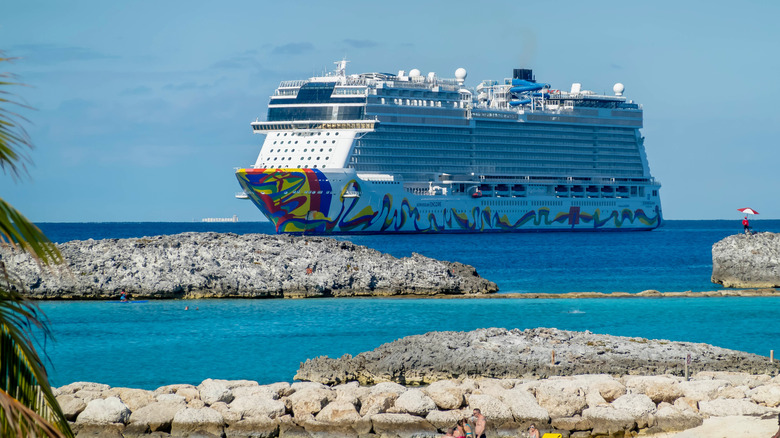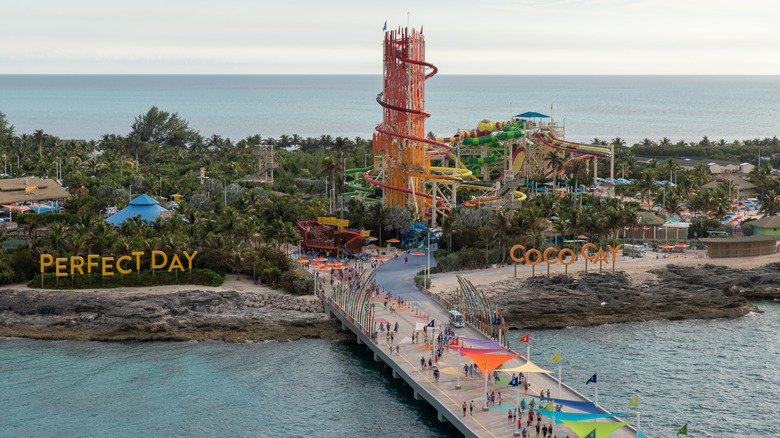How To Visit The Exclusive Private Islands Owned By Cruise Lines
One of the most decadent phrases in the English language is "private island." Back in the day, buccaneers used to claim their own isles; today, private islands are the domains of eccentric billionaires. Wouldn't it be lovely to enjoy your own tropical paradise, where all the land you see belongs to you, and the "moat" around it is literally the ocean?
In 1977, the owners of Norwegian Cruise Line decided to cash in on this idea — by purchasing Great Stirrup Cay from the Commonwealth of The Bahamas. Norwegian ships would still drop anchor in foreign ports, just as they always had, but passengers were also treated to a special island, owned exclusively by the company. The endless beaches and swaying palm trees of this 270-acre land mass are the trademarks of Caribbean luxury. Crystalline shallows are perfectly suited to swimming and snorkeling, and the reclusive resort even has its own mascot — the legendary "swimming pigs," which are actual swine that tread water.
Ever since this pioneering purchase, many other cruise companies have followed suit, finding small islands to call their own. So how do you reach these isolated islets? Can you sail there? Fly there? In short, no. The whole point is to book a cruise with the line that owns it. You could easily add these islands to a list of must-visit Caribbean destinations.
A private island for every taste
As with many destinations around the world — such as Antarctica or the Galápagos Islands — cruise ships are the most convenient way to reach certain ports. Privately owned islands take this concept one step farther; the only way to visit them is by cruise ship. The island is built and operated in the image of the cruise line. In the case of Great Stirrup Cay, the language is English, the currency is U.S. dollars, and the time zone is Eastern Standard Time, so many travelers don't have to make any adjustments while on shore. Indeed, your stateroom key card works anywhere on the island as well. Meanwhile, cruises don't have to pay port fees here, which lessens their operating costs.
Private islands are generally built on "cays," or low-lying islands composed of sand or coral. Compared to big Caribbean islands like Puerto Rico, they tend to be tiny — but also large enough to support high-rise hotels, hiking trails, beaches big enough for dune buggies, reefs for underwater exploration, and all kinds of other activities. Each island has its own trademarks: Princess Cruise's 40-acre Princess Cays has colorful bungalows and banana boat rides. Royal Caribbean's CocoCay has its Thrill Waterpark and Daredevils Peak, the tallest waterslide in the Caribbean. Carnival Cruise Line (and its smaller Holland America Line) owns Half Moon Cay, which specializes in horseback rides and its Aqua Trax jet ski adventure.
You may be wondering whether a visit to a private island costs more or less than a regular cruise. This is a difficult question to answer, as pricing fluctuates considerably throughout the year, but most agree that private islands aren't radically more expensive unless you splurge on local activities. If you've never boarded a cruise at all, here are some things first-timers should expect when boarding a cruise.

